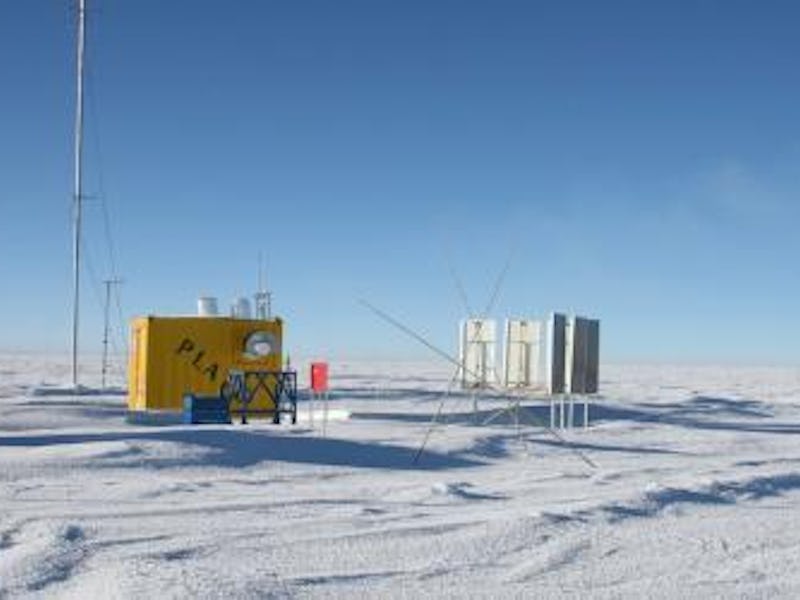This Antarctic Dome Could Teach Us How the Universe Got Born

Scientists have identified a remote site in Antarctica from which they can study a rare kind of light normally only observable from air or space. At 13,000 feet, Dome A is the highest point on the continent, and one of the only places on Earth where astronomers can access an insanely high-frequency light called terahertz radiation — which could be key to unraveling the mysterious origins of the universe.
Terahertz radiation, which has a frequency about 1,000 times greater than the phone on which you’re probably reading this, has its origins in cold clouds of interstellar gas and dust. This matters because any time researchers can gain better access to ancient, pristine materials like this, they can potentially find clues to the building blocks of early life in the universe.
Natural water vapor in our atmosphere absorbs almost all of the terahertz radiation that strikes Earth — but Dome A is situated in the driest region anywhere on the planet. Its also a prime location for astronomy. The freezing temperatures, cold air, lack of wind, and absence of light pollution (https://www.inverse.com/article/24322-antarctica-pyramid-mountain-alien-ufo-base) isolate Antarctica from so many factors that can distort observations (airplanes don’t even fly to Dome A; it’s only accessible via a three-week hike from the coast). Dome A is something of a “natural laboratory,” according to the researchers, who released a study detailing the site online Monday through the journal Nature Astronomy.
There’s a long history of looking to Earth’s least hospitable environments when we want to learn about celestial objects. This is why we study the ocean floor and actual bogs of eternal stench in Ethiopia, and train Mars-bound astronauts on Hawaiian volcanoes and the Canary Islands. But we’re usually canvassing these extreme ecosystems for promising microbial life, rather than looking upward, which makes this latest find kind of cool.
Moreover, it’s just nice to get any kind of good news out of Antarctica these days.